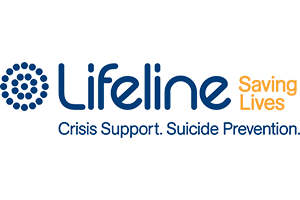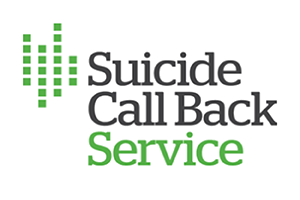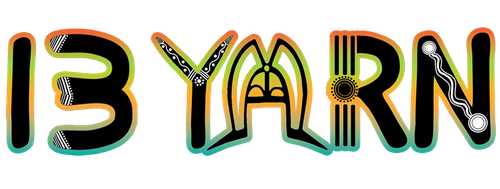Turn on suggestions
Auto-suggest helps you quickly narrow down your search results by suggesting possible matches as you type.
Showing results for
Useful resources
Options
- Mark Discussion as New
- Mark Discussion as Read
- Float this Discussion for Current User
- Favourite
- Subscribe
- Printer Friendly Page
- Mark as New
- Favourite
- Subscribe
- Get link
- Flag for Moderator
29-09-2016 11:47 AM
29-09-2016
11:47 AM
29-09-2016 11:47 AM
29-09-2016
11:47 AM
disappointing suicide statistics
ABS SHOW RISING SPIKE IN SUICIDE AMONG WOMEN AND TEENAGE GIRLS.
BY MazAZOE FORDU
SEP 29, 2016. ABC news
ABS figures reveal:
• Suicide is the leading cause of death for Australians aged 15 - 44yo
• 3,027 suicide deaths in 2015 — up 5.4 per cent from total of 2,864 in 2014
• Aboriginal and Torres Strait Islander people are twice as likely to die by suicide than non-Indigenous people with 152 deaths by suicide in 2015, up from 143 in 2014
• Highest rate of suicide reported in 2015 was men in 85+ age group with 68 deaths
• All states except South Australia reported a stable or rising rate of suicide deaths in 2015.
The number of Australians who took their own lives surpassed 3,000 last year for the first time, new figures from the Australian Bureau of Statistics (ABS) have revealed.
In 2015, there were 3,027 people who died by suicide — 2,292 were men and 735 were women.
The figures show that deaths from self-harm are three times more common for males than females, however the number of women who end their lives is going up.
Chief executive of Suicide Prevention Australia, Sue Murray, told ABC News this trend was concerning.
"We have seen a 26 per cent increase in the suicide rates among women and the numbers of suicides among women (rise) over the last five year period," Ms Murray said.
"We don't know why this is occurring, so we really need to see the government come on board with investment in research, so we can really understand what it is that is bringing about this increase and the way in which [women] are choosing to take their own lives."
The ABS statistics also reveal that the number of teenage girls who die by suicide has almost doubled in a year.
In 2015, 56 girls between the ages of 15 and 19 ended their lives, up from 38 in 2014.
"The numbers are not large but certainly the fact that it is a 45 per cent increase in a one-year period certainly needs good investigation," Ms Murray said.
"I think we need to be looking very carefully at the type of suicide prevention programs we're delivering."
SURVIVOR HAYLEY SAYS - DON'T GIVE UP ON TREATMENT
Hayley Purdon, 28, attempted suicide when she was 20 years old.
She told ABC News she had low self esteem, depression, anxiety and an eating disorder in her teens but she was too afraid to talk about it with her friends, family or doctor because of the stigma surrounding mental illness.
"It was just so hard to discuss things like that, there is such shame that comes with those sorts of feelings that you don't want to be honest with people," Miss Purdon said.
"It was a massive barrier for me getting help at the time."
Miss Purdon was hospitalised for two days after her suicide attempt eight years ago and then saw a psychologist for the next year.
"That was really what saved my life — having someone I could trust and connect with and someone whose approach to therapy suited what I needed," Miss Purdon said.
With the release of Wednesday's statistics she urged other people with suicidal thoughts not to give up, even if previous treatments had not helped them.
"There are so many different ways of treating mental health issues," she said.
"You may see one counsellor or psychologist and it may not work for you (but) that's not the end, there are so many ways you can approach it."
She now sees a psychologist occasionally if she needs to, but otherwise has found solace in a job she loves and hobbies that make her happy, such as gardening, flying small aeroplanes and sewing.
"I have a massive list of things that make me feel positive about life now — I have a really good life," she said
PEOPLE WITH MENTAL ILLNESS HIGHLY REPRESENTED IN STATISTICS
The chief executive of the national mental health charity SANE Australia, Jack Heath, says people with mental health conditions are highly represented in the statistics.
"An area we really need to focus our activity on, is for those people who are living with severe and complex mental illnesses," Mr Heath told ABC News.
"According to the National Mental Health Commission that adds up to around 690,000 Australians and when we look at the suicide rates for those people they're 10-40 times the general population.
"So whether it's schizophrenia, bipolar, borderline personality disorder, or an eating disorder, those people have suicide rates far and above any other group in the community.
"We need to focus on reducing the stigma and shame that's associated with mental illness."
© 2016 ABC news online
BY MazAZOE FORDU
SEP 29, 2016. ABC news
ABS figures reveal:
• Suicide is the leading cause of death for Australians aged 15 - 44yo
• 3,027 suicide deaths in 2015 — up 5.4 per cent from total of 2,864 in 2014
• Aboriginal and Torres Strait Islander people are twice as likely to die by suicide than non-Indigenous people with 152 deaths by suicide in 2015, up from 143 in 2014
• Highest rate of suicide reported in 2015 was men in 85+ age group with 68 deaths
• All states except South Australia reported a stable or rising rate of suicide deaths in 2015.
The number of Australians who took their own lives surpassed 3,000 last year for the first time, new figures from the Australian Bureau of Statistics (ABS) have revealed.
In 2015, there were 3,027 people who died by suicide — 2,292 were men and 735 were women.
The figures show that deaths from self-harm are three times more common for males than females, however the number of women who end their lives is going up.
Chief executive of Suicide Prevention Australia, Sue Murray, told ABC News this trend was concerning.
"We have seen a 26 per cent increase in the suicide rates among women and the numbers of suicides among women (rise) over the last five year period," Ms Murray said.
"We don't know why this is occurring, so we really need to see the government come on board with investment in research, so we can really understand what it is that is bringing about this increase and the way in which [women] are choosing to take their own lives."
The ABS statistics also reveal that the number of teenage girls who die by suicide has almost doubled in a year.
In 2015, 56 girls between the ages of 15 and 19 ended their lives, up from 38 in 2014.
"The numbers are not large but certainly the fact that it is a 45 per cent increase in a one-year period certainly needs good investigation," Ms Murray said.
"I think we need to be looking very carefully at the type of suicide prevention programs we're delivering."
SURVIVOR HAYLEY SAYS - DON'T GIVE UP ON TREATMENT
Hayley Purdon, 28, attempted suicide when she was 20 years old.
She told ABC News she had low self esteem, depression, anxiety and an eating disorder in her teens but she was too afraid to talk about it with her friends, family or doctor because of the stigma surrounding mental illness.
"It was just so hard to discuss things like that, there is such shame that comes with those sorts of feelings that you don't want to be honest with people," Miss Purdon said.
"It was a massive barrier for me getting help at the time."
Miss Purdon was hospitalised for two days after her suicide attempt eight years ago and then saw a psychologist for the next year.
"That was really what saved my life — having someone I could trust and connect with and someone whose approach to therapy suited what I needed," Miss Purdon said.
With the release of Wednesday's statistics she urged other people with suicidal thoughts not to give up, even if previous treatments had not helped them.
"There are so many different ways of treating mental health issues," she said.
"You may see one counsellor or psychologist and it may not work for you (but) that's not the end, there are so many ways you can approach it."
She now sees a psychologist occasionally if she needs to, but otherwise has found solace in a job she loves and hobbies that make her happy, such as gardening, flying small aeroplanes and sewing.
"I have a massive list of things that make me feel positive about life now — I have a really good life," she said
PEOPLE WITH MENTAL ILLNESS HIGHLY REPRESENTED IN STATISTICS
The chief executive of the national mental health charity SANE Australia, Jack Heath, says people with mental health conditions are highly represented in the statistics.
"An area we really need to focus our activity on, is for those people who are living with severe and complex mental illnesses," Mr Heath told ABC News.
"According to the National Mental Health Commission that adds up to around 690,000 Australians and when we look at the suicide rates for those people they're 10-40 times the general population.
"So whether it's schizophrenia, bipolar, borderline personality disorder, or an eating disorder, those people have suicide rates far and above any other group in the community.
"We need to focus on reducing the stigma and shame that's associated with mental illness."
© 2016 ABC news online
1 REPLY 1
- Mark as New
- Favourite
- Subscribe
- Get link
- Flag for Moderator
30-09-2016 06:15 PM
30-09-2016
06:15 PM
30-09-2016 06:15 PM
30-09-2016
06:15 PM
Re: disappointing suicide statistics
Peak body calls for Australia to match suicide prevention efforts and investment to magnitude of public health problem
28 September 2016, Australia: Suicide is again the leading cause of death for Australians aged 15-44, demonstrating the need for greater national effort on suicide prevention. The report released today by the Australian Bureau of Statistics (ABS) shows that 3,027 Australians died by suicide in 2015. This is an 5.4% increase from the previously reported 2014 figure of 2,864.
Suicide Prevention Australia (SPA) Chief Executive Sue Murray says:
“First and foremost I acknowledge the human lives lost by suicide and the pain suicide brings to our lives. Recent research tells us that hundreds of Australians are impacted by each suicide death. Today’s data release is a heartbreaking reminder of why Australia must match its prevention efforts and investment to the magnitude of the public health problem we face.”
“We are acutely aware that there is a continuing trend of increasing suicide rates among women, particularly young women, and a concerning shift to more violent means. Significant reforms are underway to improve regional responses to suicide. We will maintain vigilance and work closely with key partners including Federal and State/Territory governments, the National Mental Health Commission and the Primary Health Networks to ensure resources are allocated where and when they are needed.”
National Coalition for Suicide Prevention Chairman Mathew Tukaki agrees and calls for focus in these unsettling times, “This year we have seen unprecedented bipartisan support for major mental health and suicide prevention reforms. The information released today tells us that our exposure to and the impact of suicide is on the rise. We must focus on implementing the promised reforms, building workforce capacity and prioritising community driven suicide prevention supported by national leadership. We must hold our focus in order to make the deep systemic and social changes needed.”
The release of 2015 data has occurred much earlier than the usual March release. The ABS has improved internal processes to bring the release forward and feel confident that they are able to maintain the high quality of the data while providing earlier access to this important public health information.
Headline data published includes:
For the first time more than 3,000 Australians have died from suicide.
The highest rate reported was men in the 85+ age group with 68 deaths (39.3 per 100,000)
There were 1,160 suicide deaths in males aged 30-54, with ages 40-54 all recording an age-specific rate of 30.9 per 100,000
The highest age-specific suicide rate reported for females in 2015 was observed in the 45-49 age-group (82 deaths; 10.4 per 100,000)
Suicide deaths for females aged 15-19 rose from 5.3 per 100,000 in 2014 (38 deaths) to 7.8 per 100,000 in 2015 (56 deaths)
The lowest age-specific suicide rate for males was in the 0-14 year age-group (6 deaths; 0.3 per 100,000) and the 15-19 age-group (89 deaths; 11.8 per 100,000)
The lowest age-specific suicide rate for females was observed in the 0-14 age-group with 8 deaths (0.4 per 100,000), followed by 65-69, 60-64 and 75-79 age-groups (4.5, 5.4 and 5.4 per 100,000 respectively)
Aboriginal and Torres Strait Islander people are twice more likely to die by suicide than non-Indigenous people with 152 deaths by suicide in 2015 (110 male, 42 female) an increase from 143 deaths in 2014 (102 male, 41 female)
Suicide was the second leading cause of death among Aboriginal and Torres Strait Islander men with 110 deaths at a rate of 39.2 per 100,000 behind heart disease
Aboriginal and Torres Strait Islander young people in the 15-17 age-group observed a suicide rate of 9.3 per 100,000 compared to non-Indigenous of 1.8 per 100,000.
Over the five-year period from 2011-2015, the rate of suicide for males aged 5-17 was 2.4 per 100,000 and for females 2.0 per 100,000 and 2.2 per 100,000 overall.
Suicide death rates in the 15-17 age-group for males was 8.7 per 100,000 and 6.3 per 100,000 for females
Research released this month on exposure to and impact of suicide
On World Suicide Prevention Day (10 September), Suicide Prevention Australia (SPA) in collaboration with the University of New England has published a ground-breaking research report on Understanding the Exposure and Impact of Suicide in Australia. Download the report from www.suicidepreventionaust.org
Today’s Causes of Death data release make it all the more important for us to recognise the far-reaching impact of suicide as a public health issue in Australia. The research is based on the input of thousands of respondents from across the country who have been affected by suicide. This valuable information allows us to better understand how individuals are impacted by suicide and to inform where funds and expertise are directed in suicide prevention.
Recommendations as a result of this report call for Australia to:
1. Increase community awareness about suicide prevention and educate communities on suicide and the broad spectrum of suicidal behaviours to help build capacity within the community to give and get help.
2. Recognise lived experience of suicide as a public health issue of significance in Australia.
3. Develop and support a National Suicide Prevention Strategy, including a dedicated component addressing the long-term exposure and impact of suicide. This Strategy should be supported by a National Suicide Prevention Act and monitored by a National Office for Suicide Prevention.
4. Prioritise Aboriginal and Torres Strait Islander suicide prevention and culturally appropriate suicide prevention strategies. National Aboriginal and Torres Strait Islander Suicide Prevention Strategy implementation funds must be released as a matter of urgency.
5. Ensure consistent comprehensive discharge plans are developed and implemented for all patients upon being discharged from the health system including the involvement of family, close contacts and community services.
6. Engage the Productivity Commission to conduct a detailed independent assessment of the cost of suicidal behaviour in Australia. This assessment should include the costs associated with exposure to, and impact of, suicidal behaviour, as well as suicide deaths.
Contacts and information:
Suicide Prevention Australia (SPA) provides national leadership for the suicide prevention sector in Australia. SPA works collaboratively to develop a community that knows how to ask for help and how to give help. As the lead agency of the National Coalition for Suicide Prevention, we build and facilitate partnerships to reduce the stigma around mental illness and suicide, and to assist the healing for people with lived experience of suicide attempts and suicide.
Suicide Prevention Australia believes that the wisdom gained by those with lived experience of suicide must be used to inform suicide prevention. The national Lived Experience Network (LEN) is made up of people from across the country who have been brought together by experience of suicide.
The National Coalition for Suicide Prevention comprises organisations that deliver suicide prevention programs or services. The group is passionate about developing partnerships that contribute to collective impact in suicide prevention.
Talking about suicide in the media:
A reminder of the Mindframe Media guidelines -
http://www.mindframe-media.info/ and http://ww.conversationsmatter.com.au for tips on how to talk safely and constructively about suicide.
For a full summary of ABS Causes of Death data relating to suicide, please visit the Mindframe website at http://www.mindframe-media.info/
Crisis support information
Lifeline 13 11 14 www.lifeline.org.au/gethelp
·
Suicide Call Back Service 1300 659 467 www.suicidecallbackservice.org.au
·
Kids Helpline 1800 55 1800 www.kidshelp.com.au
MensLine 1300 78 99 78 www.mensline.org.au
For additional services and support visit www.suicidepreventionaust.org and click on the Get Help button.
Media Contact: Michelle Kwan michellek@suicidepreventionaust.org
Contact Us:
W: www.suicidepreventionaust.org
E: admin@suicidepreventionaust.org
P: 02 9262 1130
28 September 2016, Australia: Suicide is again the leading cause of death for Australians aged 15-44, demonstrating the need for greater national effort on suicide prevention. The report released today by the Australian Bureau of Statistics (ABS) shows that 3,027 Australians died by suicide in 2015. This is an 5.4% increase from the previously reported 2014 figure of 2,864.
Suicide Prevention Australia (SPA) Chief Executive Sue Murray says:
“First and foremost I acknowledge the human lives lost by suicide and the pain suicide brings to our lives. Recent research tells us that hundreds of Australians are impacted by each suicide death. Today’s data release is a heartbreaking reminder of why Australia must match its prevention efforts and investment to the magnitude of the public health problem we face.”
“We are acutely aware that there is a continuing trend of increasing suicide rates among women, particularly young women, and a concerning shift to more violent means. Significant reforms are underway to improve regional responses to suicide. We will maintain vigilance and work closely with key partners including Federal and State/Territory governments, the National Mental Health Commission and the Primary Health Networks to ensure resources are allocated where and when they are needed.”
National Coalition for Suicide Prevention Chairman Mathew Tukaki agrees and calls for focus in these unsettling times, “This year we have seen unprecedented bipartisan support for major mental health and suicide prevention reforms. The information released today tells us that our exposure to and the impact of suicide is on the rise. We must focus on implementing the promised reforms, building workforce capacity and prioritising community driven suicide prevention supported by national leadership. We must hold our focus in order to make the deep systemic and social changes needed.”
The release of 2015 data has occurred much earlier than the usual March release. The ABS has improved internal processes to bring the release forward and feel confident that they are able to maintain the high quality of the data while providing earlier access to this important public health information.
Headline data published includes:
For the first time more than 3,000 Australians have died from suicide.
The highest rate reported was men in the 85+ age group with 68 deaths (39.3 per 100,000)
There were 1,160 suicide deaths in males aged 30-54, with ages 40-54 all recording an age-specific rate of 30.9 per 100,000
The highest age-specific suicide rate reported for females in 2015 was observed in the 45-49 age-group (82 deaths; 10.4 per 100,000)
Suicide deaths for females aged 15-19 rose from 5.3 per 100,000 in 2014 (38 deaths) to 7.8 per 100,000 in 2015 (56 deaths)
The lowest age-specific suicide rate for males was in the 0-14 year age-group (6 deaths; 0.3 per 100,000) and the 15-19 age-group (89 deaths; 11.8 per 100,000)
The lowest age-specific suicide rate for females was observed in the 0-14 age-group with 8 deaths (0.4 per 100,000), followed by 65-69, 60-64 and 75-79 age-groups (4.5, 5.4 and 5.4 per 100,000 respectively)
Aboriginal and Torres Strait Islander people are twice more likely to die by suicide than non-Indigenous people with 152 deaths by suicide in 2015 (110 male, 42 female) an increase from 143 deaths in 2014 (102 male, 41 female)
Suicide was the second leading cause of death among Aboriginal and Torres Strait Islander men with 110 deaths at a rate of 39.2 per 100,000 behind heart disease
Aboriginal and Torres Strait Islander young people in the 15-17 age-group observed a suicide rate of 9.3 per 100,000 compared to non-Indigenous of 1.8 per 100,000.
Over the five-year period from 2011-2015, the rate of suicide for males aged 5-17 was 2.4 per 100,000 and for females 2.0 per 100,000 and 2.2 per 100,000 overall.
Suicide death rates in the 15-17 age-group for males was 8.7 per 100,000 and 6.3 per 100,000 for females
Research released this month on exposure to and impact of suicide
On World Suicide Prevention Day (10 September), Suicide Prevention Australia (SPA) in collaboration with the University of New England has published a ground-breaking research report on Understanding the Exposure and Impact of Suicide in Australia. Download the report from www.suicidepreventionaust.org
Today’s Causes of Death data release make it all the more important for us to recognise the far-reaching impact of suicide as a public health issue in Australia. The research is based on the input of thousands of respondents from across the country who have been affected by suicide. This valuable information allows us to better understand how individuals are impacted by suicide and to inform where funds and expertise are directed in suicide prevention.
Recommendations as a result of this report call for Australia to:
1. Increase community awareness about suicide prevention and educate communities on suicide and the broad spectrum of suicidal behaviours to help build capacity within the community to give and get help.
2. Recognise lived experience of suicide as a public health issue of significance in Australia.
3. Develop and support a National Suicide Prevention Strategy, including a dedicated component addressing the long-term exposure and impact of suicide. This Strategy should be supported by a National Suicide Prevention Act and monitored by a National Office for Suicide Prevention.
4. Prioritise Aboriginal and Torres Strait Islander suicide prevention and culturally appropriate suicide prevention strategies. National Aboriginal and Torres Strait Islander Suicide Prevention Strategy implementation funds must be released as a matter of urgency.
5. Ensure consistent comprehensive discharge plans are developed and implemented for all patients upon being discharged from the health system including the involvement of family, close contacts and community services.
6. Engage the Productivity Commission to conduct a detailed independent assessment of the cost of suicidal behaviour in Australia. This assessment should include the costs associated with exposure to, and impact of, suicidal behaviour, as well as suicide deaths.
Contacts and information:
Suicide Prevention Australia (SPA) provides national leadership for the suicide prevention sector in Australia. SPA works collaboratively to develop a community that knows how to ask for help and how to give help. As the lead agency of the National Coalition for Suicide Prevention, we build and facilitate partnerships to reduce the stigma around mental illness and suicide, and to assist the healing for people with lived experience of suicide attempts and suicide.
Suicide Prevention Australia believes that the wisdom gained by those with lived experience of suicide must be used to inform suicide prevention. The national Lived Experience Network (LEN) is made up of people from across the country who have been brought together by experience of suicide.
The National Coalition for Suicide Prevention comprises organisations that deliver suicide prevention programs or services. The group is passionate about developing partnerships that contribute to collective impact in suicide prevention.
Talking about suicide in the media:
A reminder of the Mindframe Media guidelines -
http://www.mindframe-media.info/ and http://ww.conversationsmatter.com.au for tips on how to talk safely and constructively about suicide.
For a full summary of ABS Causes of Death data relating to suicide, please visit the Mindframe website at http://www.mindframe-media.info/
Crisis support information
Lifeline 13 11 14 www.lifeline.org.au/gethelp
·
Suicide Call Back Service 1300 659 467 www.suicidecallbackservice.org.au
·
Kids Helpline 1800 55 1800 www.kidshelp.com.au
MensLine 1300 78 99 78 www.mensline.org.au
For additional services and support visit www.suicidepreventionaust.org and click on the Get Help button.
Media Contact: Michelle Kwan michellek@suicidepreventionaust.org
Contact Us:
W: www.suicidepreventionaust.org
E: admin@suicidepreventionaust.org
P: 02 9262 1130






